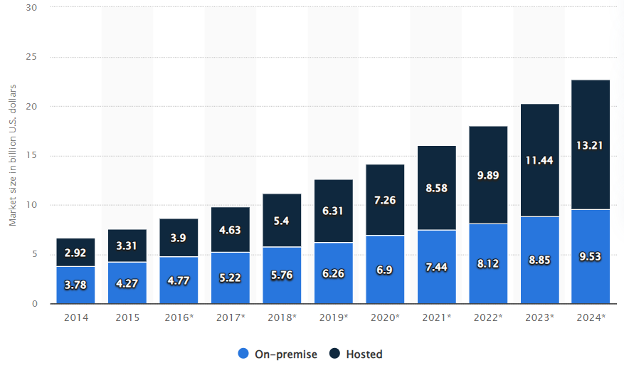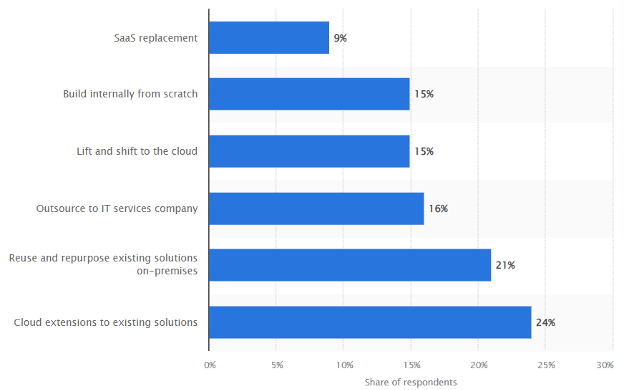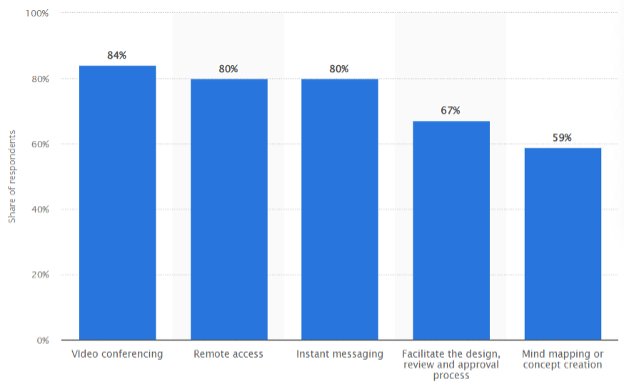The modern business environment has been reshaped significantly recently. As a result, the role of Information Technology (IT) has transcended its traditional function of support and maintenance. As C-suite IT executives, we stand at the forefront of a paradigm shift where IT is not merely an enabler but a strategic driver in enhancing the overall employee experience.
Elevating this experience goes beyond seamless operations; it is about fostering a digital workplace that thrives on innovation, collaboration tools that transcend physical boundaries, and personalized technology experiences tailored to individual preferences.
In this article, we will take a closer look at the three core strategies that IT Executives can use to optimize cloud resources and become the change agents needed for digital transformation.
I. The Digital Workplace Revolution
The digital workplace is no longer a futuristic concept but a present-day reality shaping the future of work. It encapsulates a myriad of digital tools, platforms, and technologies that empower employees to operate efficiently, securely, and collaboratively.
The cornerstone of this revolution lies in the integration of cutting-edge technologies in digital transformation ventures to create a cohesive and agile working environment.
Unified Communication Platforms
The evolution of Unified Communication as a Service (UCaaS) has revolutionized how employees communicate and collaborate. Seamless integration of voice, video, and messaging functionalities creates a unified, real-time communication experience, irrespective of geographical constraints. The figure below illustrates the growth trajectory of UCaaS adoption over the past few years.

Source: Statista
This shows that organizations are focusing more ono hosted solutions compared to on-premise ones. In 2024, the hosted solutions market is expected to be valued at $13.21 billion, compared to $9.53 billion for on-premise solutions. A key element contributing to this trend is the higher focus on cybersecurity and associated cost benefits hosted solutions offer.
Cloud-Based Collaboration
Embracing cloud-based and edge-based collaboration tools is not just a matter of choice; it is a strategic imperative. Platforms like Microsoft 365, Google Workspace, and Slack have become instrumental in:
- Breaking down silos,
- Enabling real-time document collaboration, and
- Fostering a culture of knowledge sharing.
The following figure demonstrates the global trend of cloud-based collaboration adoption. In 2021, the use of collaboration tools grew from 55% to 79%.

In 2024, this focus on collaboration tools is going to continue as a hybrid work model continues to be the norm for many organizations. This, in turn, is also giving rise to the hybrid cloud infrastructure.
Virtual Desktop Infrastructure (VDI)
The rise of remote work necessitates a robust virtual infrastructure. VDI solutions empower employees to access their desktop environment from anywhere, ensuring a consistent experience across devices. This not only enhances flexibility but also fortifies cybersecurity by centralizing data management.
In 2022, a survey highlighted that 21% of organizations are focusing on modernization through reusing existing solutions and incorporating cloud extensions. This emphasizes the prevalent trend of integrating modernization efforts that are already in place or adopting a mixed modernization approach.

Source: Statista
Only 15% mentioned building from scratch, signifying a less popular strategy in the current landscape. A majority (24%) suggested that the are going to use cloud extensions for existing solutions.
Collaboration Tools: Breaking Down Geographical Barriers
In an era where the workplace extends beyond physical boundaries, collaboration tools have emerged as the linchpin for cohesive teamwork. The strategic deployment of these tools transcends the rudimentary exchange of information; it fosters a culture of innovation, inclusivity, and collective problem-solving.
In 2022, video conferencing was preferred by a majority to be a critical collaborative tool for remote and hybrid work environments.

Advanced Project Management Solutions:
Modern IT executives understand that project management extends beyond Gantt charts. AI-driven project management tools, such as Asana, Jira, or Trello, facilitate efficient task allocation, progress tracking, and predictive analytics for potential roadblocks
Virtual Reality (VR) and Augmented Reality (AR)
The integration of VR and AR in collaborative environments is not science fiction; it’s strategic foresight. These technologies provide immersive experiences for remote teams, enabling them to collaborate on complex projects as if they were in the same room.
In 2021, 79% of respondents in a survey acknowledged using collaboration tools, marking a 44% increase from 2019. The adoption surge is attributed to the widespread shift to hybrid work models prompted by the COVID-19 pandemic, leading businesses to leverage various technologies to facilitate remote work.
Personalized Technology Experiences
Acknowledging that every employee is unique and has distinct preferences, delivering personalized technology experiences is pivotal. It’s not about one-size-fits-all solutions but tailoring IT infrastructure to align with individual work styles, fostering a sense of ownership and empowerment.
AI-Driven Personalization
Leveraging artificial intelligence to personalize user interfaces, suggest relevant content, and anticipate user needs is the hallmark of modern IT strategy. Intelligent automation is increasingly shaping personalized technology experiences in the industry, especially as generative AI usage becomes more prevalent.
Device Agnosticism
The modern workforce operates across a spectrum of devices. Adopting a device-agnostic approach ensures that applications and systems seamlessly adapt to various platforms, enhancing accessibility and user satisfaction.
Continuous Learning Platforms
Upskilling and continuous learning are non-negotiable in the IT industry. Personalized learning platforms, driven by AI algorithms, not only identify skill gaps but also deliver customized learning paths, empowering employees to stay abreast of technological advancements.
Digital interactions as a share of customer interactions have nearly tripled globally from June 2017 to July 2020, reaching almost 60%. The most significant increase, 21%, occurred in July 2020 compared to right before the COVID-19 pandemic in December 2019. North America experienced the most substantial growth, rising from 25% in June 2017 to 65% in July 2020.
Conclusion: Shaping the Future of Work, One IT Strategy at a Time
As C-suite IT executives, we are architects of the digital future. Elevating employee experience through IT is not an ancillary goal; it’s the cornerstone of organizational success. The strategic deployment of digital workplace solutions, collaboration tools, and personalized technology experiences propels us into an era where work is not just a place but an experience.
In this dynamic landscape, the synergy between IT and employee experience is not just a competitive advantage; it’s a strategic imperative for digital transformation. Let us go through this digital frontier with acumen, leveraging technology to empower our workforce and propel our organizations toward unprecedented heights. The future of work is here, and as IT visionaries, we are its architects.



0 Comments